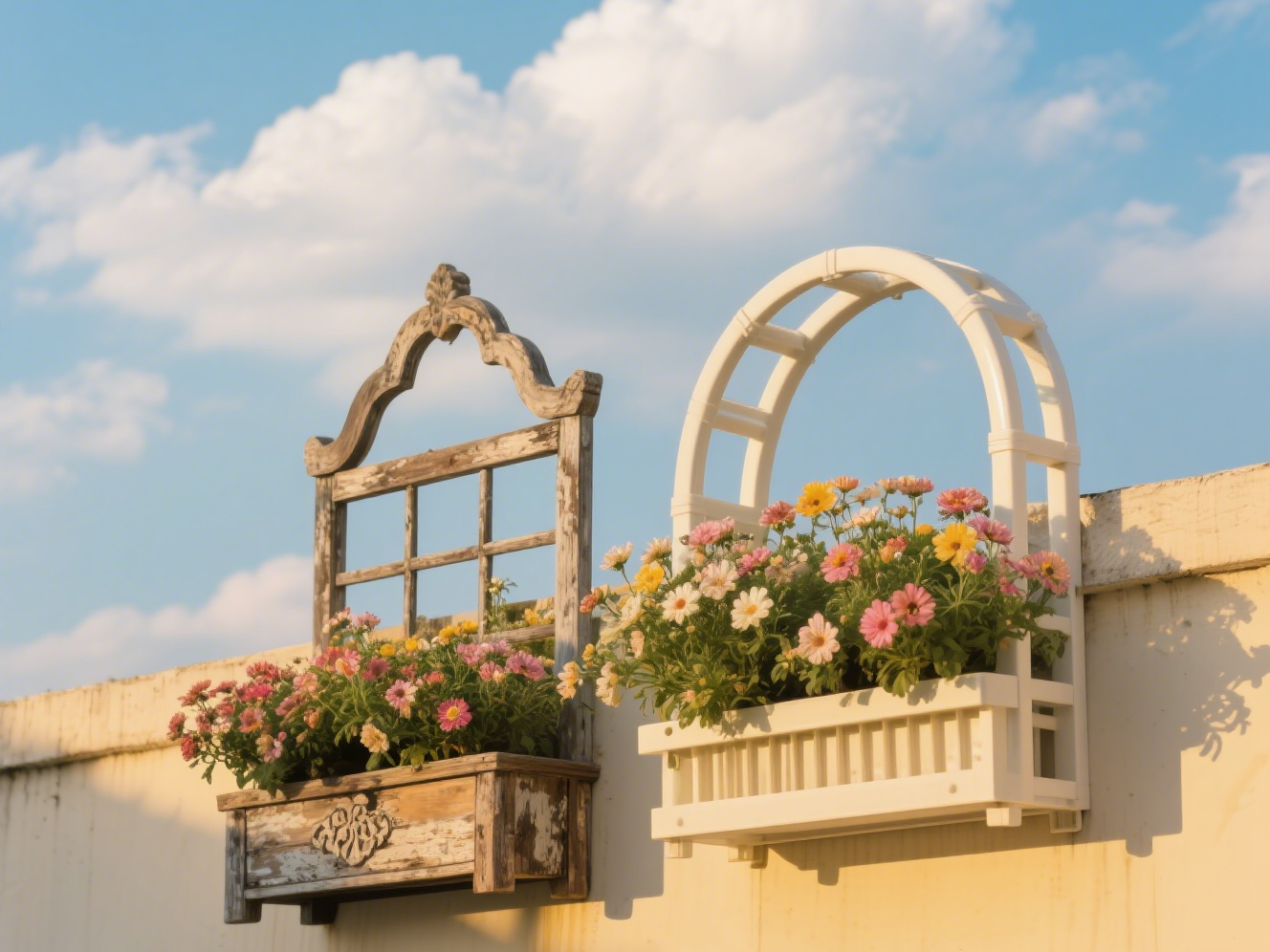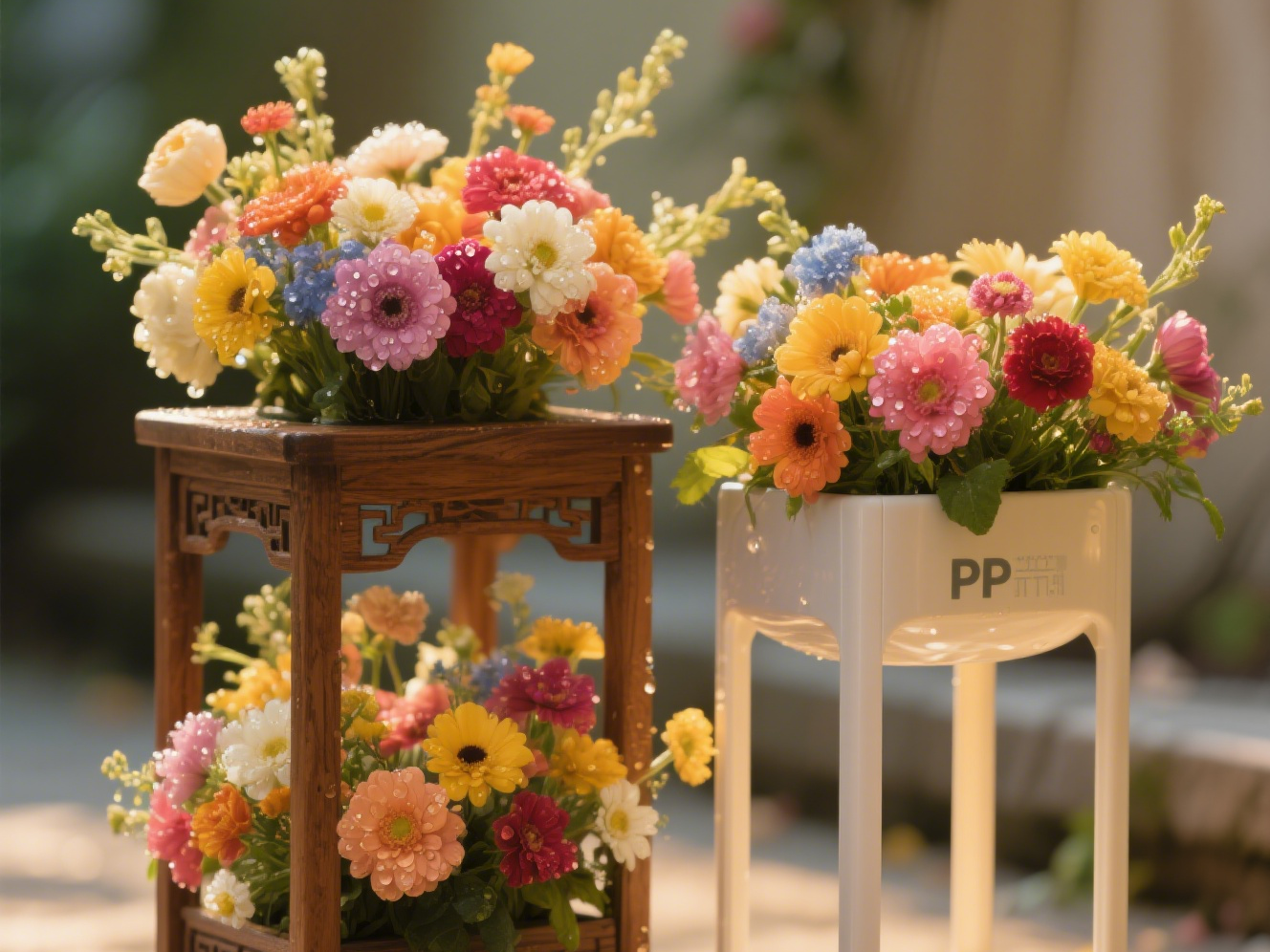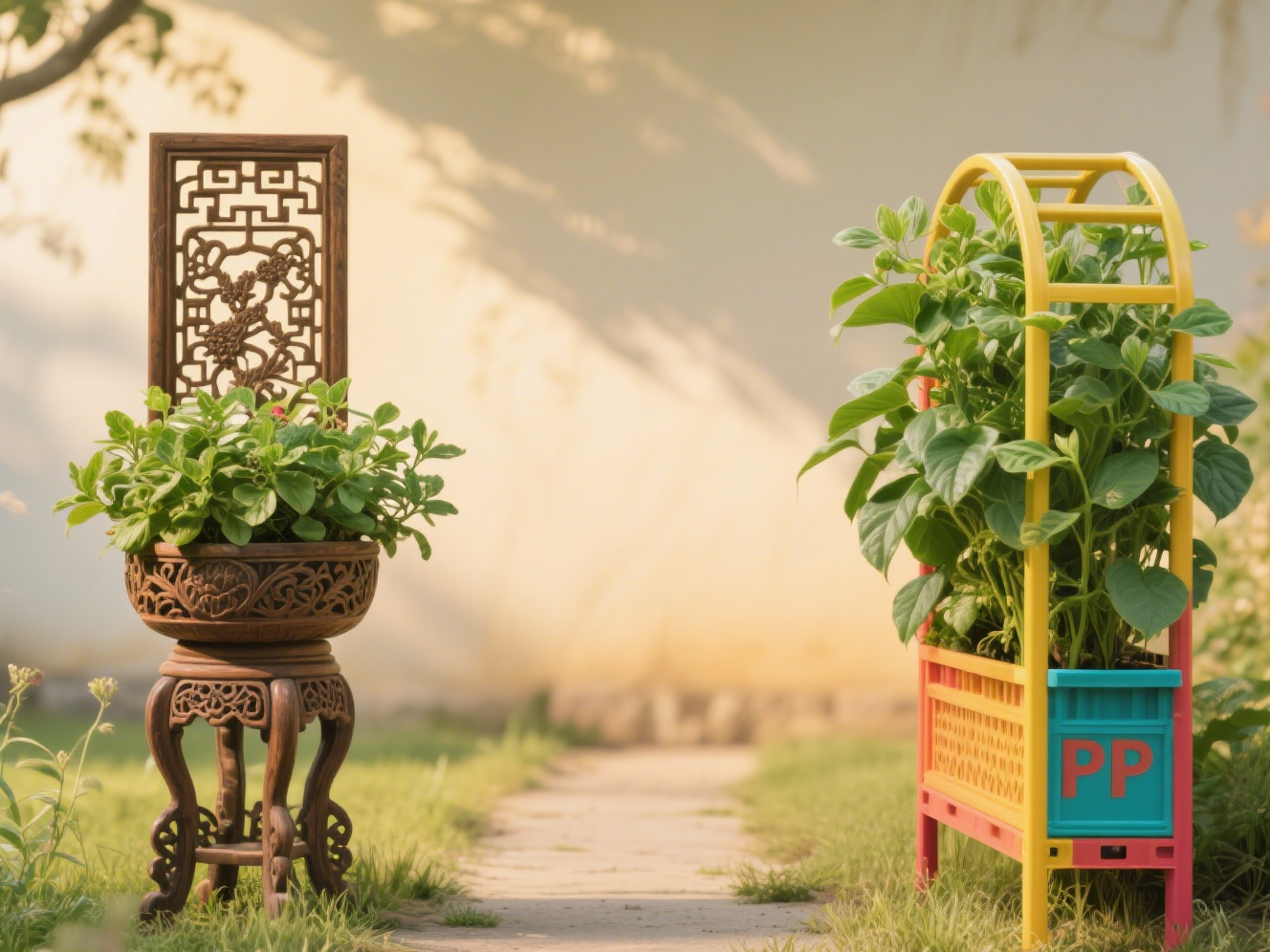In the era of globalization and digitalization, PVC flower racks are not just practical gardening tools but also carriers of cultural integration between the East and the West, using modern materials to reinterpret the oriental wisdom and western romance of traditional horticulture.
In the East, PVC flower racks subtly blend with the landscaping philosophy of classical gardens. In a modern homestay renovation project in Suzhou, designers cut and assembled PVC pipes into the shape of traditional moon gate flower racks. Wisteria and Chinese trumpet creeper twining around them form a poetic contrast against the white PVC frame, embodying the classic Chinese aesthetic of “interplay between reality and illusion.” This innovative design preserves the essence of Jiangnan garden art—such as “borrowed scenery” and “framed scenery”—while overcoming the decay-prone nature of traditional wood, breathing new life into classical aesthetics in modern architecture. In Japan, PVC flower racks are infused with the spirit of “wabi-sabi” aesthetics: gardeners use matte gray PVC pipes to build minimalist shelves, pairing them with withered branches and moss to blend industrial materials with natural elements, interpreting the unique appreciation for imperfection and transience.

Western horticultural culture endows PVC flower racks with romantic pastoral charm. On family farms in Provence, France, PVC flower racks are painted in Provence blue, supporting vast expanses of lavender and roses to form colorful archways. This design, full of Southern French charm, continues the French rural gardening pursuit of color and layering. Thanks to the weather resistance of PVC, the racks remain intact in the Mediterranean climate with intense sunshine and alternating rainstorms. In the succulent plant enthusiast communities on the U.S. West Coast, DIY PVC flower racks have become canvases for personal style—some spray them in desert camouflage to create a wild atmosphere with cacti, while others use fluorescent PVC pipes to build futuristic geometric shapes, forming a fantastic contrast with soft succulents.

As PVC flower racks go global, they evolve into new forms through cross-cultural exchange. In Southeast Asia, they combine with tropical plants to create vertical green walls, alleviating urban heat islands; African tribes cut PVC pipes into colorful fragments and inlay them on flower racks, forming decorative art with strong ethnic characteristics. This collision of culture and materials allows PVC flower racks to transcend their tool-based function, becoming living samples of era-specific cultural exchange and witnessing the pluralistic development of horticultural art in the process of globalization

